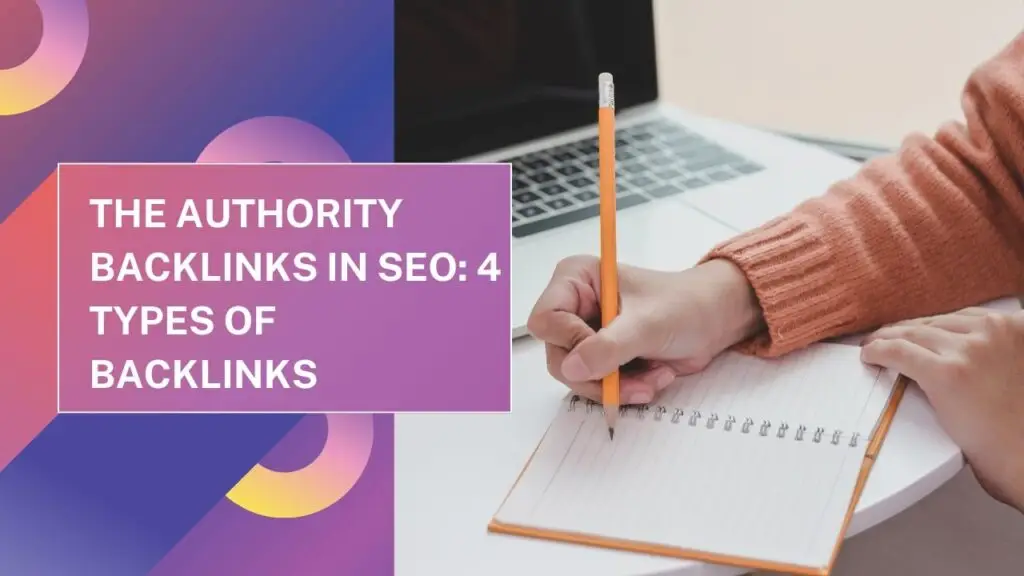Introduction to SEO
In today’s digital age, establishing a robust online presence is indispensable for businesses and individuals. However, merely having a website is insufficient; ensuring your target audience can easily find it is crucial. This is where Search Engine Optimization (SEO) comes into play.
SEO involves optimizing a website to improve its visibility in search engine results pages (SERPs) when people search for products, services, or information related to your business. Major search engines like Google, Bing, and Yahoo are gatekeepers to the vast expanse of online content. By strategically enhancing various elements of your website, you can climb higher in these search results, increasing the likelihood that your site will be seen by potential and existing customers.
The benefits of improved search engine visibility are manifold. Higher rankings can lead to increased web traffic, which in turn can result in more leads, sales, and overall engagement with your brand. Effective SEO practices encompass a variety of techniques, including keyword research, on-page optimization, content creation, link building, and technical improvements. These strategies work together to ensure that search engines understand the relevance and quality of your website, rewarding it with better positioning in search results.
In essence, SEO is not just about attracting visitors; it’s about attracting the right visitors—those who are actively seeking what you offer. This targeted approach helps build trust and authority, making it more likely that visitors will convert into loyal customers. As the digital landscape continues to evolve, staying ahead with effective SEO strategies is key to maintaining and growing your online presence.
How Search Engines Rank Websites
Have you ever found yourself marvelling at the seemingly magical ability of Google to pinpoint precisely what you’re looking for amidst the vast ocean of billions of web pages? How does this search engine giant sift through such an overwhelming amount of information to deliver the most relevant results right at your fingertips?
The answer lies not in magic, but in a sophisticated and intricate system powered by cutting-edge technology. Google’s search process can be compared to a meticulously choreographed dance, with algorithms, crawlers, and ranking systems all playing crucial roles.
Imagine this: A legion of digital spiders, aptly named “crawlers,” constantly roam the vast expanse of the internet, tirelessly following links and hopping from one webpage to another. Their mission? To discover and meticulously document every new piece of content added to the web, be it a captivating article, a stunning image, an informative video, or anything in between. Once these tireless explorers gather their digital treasures, they deliver them to Google’s indexing system. Imagine a library of colossal proportions, housing an impeccably organized catalogue of every single webpage discovered by the crawlers. This “index” serves as Google’s comprehensive map of the web, constantly updated and meticulously maintained.
Now, when you type a query into Google’s search bar, you’re essentially presenting a challenge to this sophisticated system. This is where the “algorithms” come into play. These intricate mathematical formulas act as Google’s team of expert librarians, meticulously sifting through the vast index to identify the most relevant and valuable resources that match your search intent. But how do these algorithms determine relevance? This is where the concept of “ranking” takes centre stage. Google’s algorithms analyze a multitude of factors, each carefully weighted for significance:
Keywords:
In the realm of SEO, keywords are the compass guiding search engines to your content. These specific words and phrases, typed by users into search bars, act as signals, revealing what people are searching for online. By strategically integrating relevant keywords into your website content, meta descriptions, and other SEO elements, you make it clear to search engines what topics your website covers and who your target audience is. When users search using those same or similar keywords, your website has a higher chance of appearing in the search results, driving targeted traffic and increasing your online visibility. Essentially, keywords are the bridge connecting your valuable content with the people who are actively searching for it.
Content Quality:
Is the content well-written, informative, and genuinely helpful in addressing your search query?
User Experience:
Is the website user-friendly, easily navigable, and visually appealing?
Backlinks:
How many other reputable websites vouch for the credibility and value of this particular webpage by linking to it? By meticulously analyzing this intricate web of factors, Google’s ranking system determines the order in which search results are presented to you. The goal is to prioritize the most relevant, authoritative, and high-quality content, ensuring you find exactly what you’re looking for with speed and precision.
So, the next time you marvel at the seemingly magical ability of Google to unlock the vast knowledge of the internet, remember the intricate dance of algorithms, crawlers, and ranking systems working tirelessly behind the scenes. It’s a testament to the power of human ingenuity and the transformative impact of technology in our daily lives.
Crawling: The Web’s tireless Explorers
Imagine tiny digital spiders dispatched by Google, tirelessly exploring the vast web. These bots, also known as crawlers or spiders, constantly scour the internet for new and updated content. Their mission: to discover and follow links, hopping from page to page, much like a curious explorer charting unknown territories. Whether it’s a newly published blog post, a captivating image, an informative video, or any other piece of content, these bots diligently hunt and gather it all.
Indexing: Building the Web’s Grand Library
Once the bots unearth their digital treasures, they don’t hoard them. Instead, they meticulously categorize and store this information within the search engine’s index. This index can be envisioned as a colossal, ever-expanding library, housing a meticulously organized catalogue of every discovered URL alongside its content. Think of it as the ultimate web directory, constantly being updated and refined.
Types of SEO
SEO can be broadly categorized into three main types: on-page SEO, off-page SEO, and technical SEO.
On-Page SEO
On-page SEO pertains to the process of optimizing the individual elements of a website to achieve higher rankings and attract more relevant traffic from search engines. This optimization involves refining content, HTML source code, images, and other on-page factors. The essential components of on-page SEO include:
Keyword Research and Implementation: This involves identifying pertinent keywords and phrases that your target audience is searching for and strategically incorporating them into your website’s content. Effective keyword usage helps search engines understand the context of your pages and improves the chances of appearing in relevant search results.
Content Quality: Crafting high-quality, valuable content is paramount. Your content should address the needs, questions, and interests of your audience, providing them with useful and engaging information. High-quality content not only enhances user experience but also signals to search engines that your site is authoritative and relevant.
Meta Tags and Descriptions: Writing compelling and informative meta titles and descriptions is crucial. These elements serve as the first impression users get from your site in search engine results, and well-crafted meta tags can significantly influence click-through rates. A clear, concise, and appealing meta description encourages users to visit your site over others.
Image Optimization: Ensuring that images are properly optimized can greatly enhance the user experience and improve page load times. This includes using descriptive file names, alt text, and appropriate image formats and sizes. Optimized images help search engines understand the content of your pages and contribute to better visibility.
Internal Linking: Creating a robust internal linking structure helps users navigate your website more easily and allows search engines to crawl and index your pages more effectively. Internal links distribute page authority throughout your site and highlight the most important content.
URL Structure: Using clean, descriptive URLs that include relevant keywords can improve search engine rankings and make it easier for users to understand the content of your pages at a glance.
Mobile-Friendliness: With the increasing number of users accessing the web via mobile devices, ensuring that your website is mobile-friendly is crucial. Responsive design and mobile optimization enhance user experience and are important ranking factors for search engines.
Page Load Speed: Fast-loading pages improve user experience and reduce bounce rates. Optimizing your website’s performance by minimizing code, leveraging browser caching, and using content delivery networks (CDNs) can significantly improve page load times.
By focusing on these aspects of on-page SEO, you can create a more user-friendly, search-engine-friendly website that ranks higher in search results and attracts more targeted traffic.
Off-Page SEO
Off-page SEO encompasses actions taken outside of your own website that influence your rankings within search engine results pages (SERPs). These activities are crucial for search engines to gauge the authority, relevance, and trustworthiness of your website. Key components of off-page SEO include:
Backlink Building: One of the most important aspects of off-page SEO is acquiring backlinks from reputable and authoritative websites. These inbound links act as endorsements, signalling to search engines that your content is valuable and trustworthy. The quality and quantity of backlinks directly impact your site’s credibility and search engine rankings. Effective strategies for backlink building include creating shareable content, engaging in outreach to industry influencers, and utilizing broken link-building techniques.
Social Signals: Engagement on social media platforms, such as likes, shares, comments, and overall interaction, plays a significant role in off-page SEO. Active social media presence and high levels of engagement indicate to search engines that your content is popular and relevant. Leveraging social media marketing to promote your content can amplify its reach, attract more visitors, and indirectly boost your search engine rankings.
Guest Blogging: Writing articles for other reputable websites in your industry is an effective way to gain exposure, reach new audiences, and acquire high-quality backlinks. Guest blogging allows you to showcase your expertise, drive traffic to your site, and improve your site’s authority. When engaging in guest blogging, it’s important to target respected websites and provide valuable, high-quality content that resonates with their audience.
Brand Mentions: Being mentioned on other websites, even without a direct link, can enhance your site’s visibility and authority. Search engines recognize these brand mentions and consider them as signals of trust and relevance. Engaging in public relations efforts, collaborating with influencers, and participating in industry forums can help increase brand mentions.
Influencer Outreach: Collaborating with influencers in your industry can significantly boost your off-page SEO efforts. Influencers have established audiences and can help promote your content, products, or services, leading to increased visibility and potential backlinks. Building relationships with influencers and leveraging their reach can enhance your brand’s online presence and credibility.
Local SEO and Citations: For businesses with a local presence, optimizing for local SEO is crucial. This includes getting listed in online directories, acquiring local citations, and ensuring consistent NAP (Name, Address, Phone number) information across the web. Positive reviews on platforms like Google My Business and Yelp can also improve your local search rankings.
Forum and Community Participation: Actively participating in online forums and communities related to your industry can help establish your authority and drive traffic to your site. Providing valuable insights, answering questions, and sharing your expertise in these communities can lead to increased brand recognition and potential backlinks.
By focusing on these off-page SEO strategies, you can enhance your website’s authority, improve its visibility in search engine results, and attract more targeted traffic. These efforts complement your on-page SEO activities, contributing to a comprehensive and effective search engine optimization strategy.
Technical SEO
Technical SEO focuses on optimizing the underlying infrastructure of your website to facilitate easier crawling and indexing by search engines. This aspect of SEO ensures that your site is not only accessible to search engine bots but also provides a seamless user experience. Key components of technical SEO include:
Site Speed Optimization: Ensuring that your website loads quickly is crucial for both user experience and search engine rankings. Slow-loading pages can lead to high bounce rates and poor user engagement. Techniques for optimizing site speed include compressing images, leveraging browser caching, minimizing JavaScript, and utilizing content delivery networks (CDNs). Fast-loading websites are favored by search engines and provide a better overall experience for visitors.
Mobile-Friendliness: With the increasing use of mobile devices for web browsing, it’s essential that your website is fully optimized for mobile users. This includes implementing responsive design, which adapts your site’s layout to fit various screen sizes and orientations. A mobile-friendly website not only enhances user experience but also improves your search engine rankings, as search engines like Google prioritize mobile-friendly sites in their search results.
XML Sitemaps: Creating and submitting XML sitemaps is a vital part of technical SEO. An XML sitemap acts as a roadmap for search engines, guiding them to all the important pages on your website. This helps ensure that your content is efficiently crawled and indexed. Regularly updating your XML sitemap and submitting it to search engines can improve the discoverability of your pages.
Structured Data Markup: Implementing structured data (schema markup) helps search engines understand the content of your pages more effectively. Structured data can enhance your search listings with rich snippets, providing additional information like ratings, reviews, and event details. This can improve click-through rates and provide users with a better preview of your content.
Secure Sockets Layer (SSL): Ensuring your website uses HTTPS rather than HTTP is crucial for security and SEO. An SSL certificate encrypts data transferred between the user and your website, protecting sensitive information. Search engines favor secure websites, and HTTPS is considered a ranking factor by Google.
Canonicalization: Properly implementing canonical tags helps prevent issues with duplicate content by specifying the preferred version of a webpage. This ensures that search engines understand which version of a page to index and rank, preventing dilution of ranking signals across duplicate pages.
Robots.txt File: The robots.txt file is used to instruct search engine bots on which pages or sections of your site should not be crawled. Properly configuring your robots.txt file can prevent the indexing of duplicate content, private pages, or under-construction areas, helping to maintain a clean and efficient crawl path.
Broken Link Management: Identifying and fixing broken links on your website is essential for maintaining a healthy site structure. Broken links can hinder user experience and impede search engine crawlers, potentially harming your SEO efforts. Regular audits and maintenance can help ensure all links on your site are functional.
Breadcrumb Navigation: Implementing breadcrumb navigation improves the user experience by providing a clear path of the user’s location within your site’s hierarchy. This not only helps visitors navigate your site more easily but also provides additional context to search engines, aiding in better indexing and ranking.
By focusing on these aspects of technical SEO, you can create a robust, search-engine-friendly infrastructure that enhances both user experience and search-engine visibility. These optimizations lay the groundwork for successful on-page and off-page SEO efforts, contributing to a comprehensive and effective SEO strategy.
Importance of SEO
Why SEO is Non-Negotiable for Success in the Digital Age
In today’s digitally-driven world, where consumers turn to search engines for everything from finding local businesses to researching complex topics, having a strong online presence is no longer optional—it’s essential. This is where Search Engine Optimization (SEO) takes center stage, acting as the bridge connecting businesses with their target audience.
SEO is not just a buzzword, it’s a fundamental pillar of any successful digital marketing strategy, regardless of your industry or business size. Let’s delve into why SEO is indispensable for thriving in the modern digital landscape:
Increased Visibility & Organic Traffic: The Lifeblood of Online Success
Imagine your website as a shop hidden on a secluded street. No matter how amazing your products or services are, without visibility, you’re unlikely to attract customers. SEO is the process of making your website more visible in search engine results pages (SERPs), driving organic traffic – those valuable visitors actively searching for what you offer.
Targeted Traffic: Attracting the Right Audience
SEO isn’t just about driving any traffic; it’s about attracting the right audience – those genuinely interested in what you offer. By strategically targeting relevant keywords and optimizing your content, you attract users actively seeking information related to your products or services, increasing the likelihood of conversions and valuable leads.
Enhanced User Experience: Creating a Seamless Journey
SEO goes beyond keywords and rankings; it prioritizes the user experience. A website optimized for SEO is easily navigable, loads quickly, and provides valuable, well-structured content that answers users’ questions. A positive user experience encourages visitors to stay longer, explore more pages, and ultimately convert into loyal customers.
Building Brand Credibility & Trust
Let’s face it – users trust search engines. Appearing at the top of search results instantly boosts your brand’s credibility, positioning you as an authority in your industry. Consistent SEO efforts build trust over time, signaling to potential customers that you’re a reliable source of information and solutions.
Measurable Results & Data-Driven Insights
Unlike traditional marketing methods, SEO provides valuable data and analytics, allowing you to track your website’s performance, measure the effectiveness of your strategies, and make data-driven decisions. This ability to analyze and adapt ensures you’re continually refining your approach for optimal results.
Cost-Effectiveness: Maximizing Your Marketing ROI
While SEO requires an investment of time and resources, it’s significantly more cost-effective than traditional advertising in the long run. Organic traffic generated through SEO provides a consistent stream of potential customers, maximizing your return on investment.
Staying Ahead of the Curve: Adapting to the Evolving Digital Landscape
Search engine algorithms are constantly evolving, and SEO practices need to adapt accordingly. By staying informed about the latest trends and updates, you ensure your website remains visible, relevant, and ahead of the competition in the ever-changing digital landscape.
SEO is Not an Option, It’s a Necessity
In today’s digital age, where consumers are bombarded with information and choices, SEO is the key to cutting through the noise, attracting the right audience, and achieving sustainable online success. By embracing SEO as an integral part of your business strategy, you equip yourself with the tools and visibility needed to thrive in the competitive online world. Remember, investing in SEO is not an expense, it’s an investment in the future growth and sustainability of your business.ity means increased chances of reaching your target audience.
Conclusion
In conclusion, SEO is a multifaceted and essential component of digital marketing. By understanding and implementing SEO strategies, you can increase your website’s visibility, attract more traffic, and build credibility and trust with your audience. As search engines continue to evolve, staying informed about SEO trends and best practices will be crucial for maintaining and improving your online presence.





